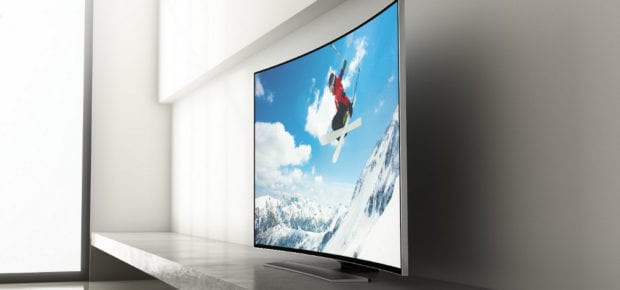July 20, 2015
One of the most exciting changes on the horizon has to do with flexible displays, a capability that ranges from a small degree of flexion to screens that can roll and fold.
With the predominance of innovation that goes inside our machines – the computing technology itself – it’s easy to forget that the actual form of our devices is another kind of technology that can be every bit as complex and transformative as the circuitry inside.
One of the most exciting changes on the horizon has to do with flexible displays, a capability that ranges from a small degree of flexion to screens that can roll and fold. Recent stats from TechNavio suggest the market for flexible screens will grow by more than 100 percent by 2019. Let’s take a look a quick look at how non-rigid displays will change our viewing landscape.
Conceptually, the idea that a screen can accommodate a small degree of bend is not completely foreign. We see bendable plastic in many forms every day. In fact, we might expect some plastic devices to bend at least slightly in order to withstand ordinary wear, such as the placement of smartphones in pockets or for protection when dropped. Some smartphone manufacturers have designed a permanent bend into their cases and screens to make them easier to hold and see.
Manufacturers are also developing displays that can actually roll up like scrolls for easy transportation. Especially now that we can store and process files in the cloud, roll-up screens enable whole new behaviors in computing and entertainment. It’s entirely possible that personal computers as we know them could be reduced to an electronic scroll and a processor the size of a coffee bean. Or if you’re going on vacation and can’t live without your 90-inch TV, roll it up and take it with you.
Perhaps the most fascinating development in flexible display technology is recent patent activity suggesting surfaces that aren’t just bendable, but can change function based on the type of bend. There are materials in development that can flex to enable different kinds of touch functions and that can suddenly become porous to activate underlying speakers or microphones. In this scenario, cases would not have to have extra holes or ports, ushering in a whole new era of device design.
When it comes to glass, new innovations from the world’s leading glass makers suggest thinner sheaths that can be wrapped around smaller objects like smartphones while still supporting critical components like touch sensors. This can also facilitate the immersive viewing experience of curved TV monitors.
Ultimately, our imaginations can’t help creating visions of devices that can hold the forms we bend them into or that can even be folded up like a napkin. And instead of having the shape of our devices dictated by the manufacturer, perhaps what we take home from the store is a true tabula rasa that we shape and re-shape as we please.





 Liquid Infrastructure: Our Planet's Most Precious Resource
Liquid Infrastructure: Our Planet's Most Precious Resource The Impact of Technology in 2025
The Impact of Technology in 2025 Quantum and AI: Safeguards or Threats to Cybersecurity?
Quantum and AI: Safeguards or Threats to Cybersecurity? Why AI Can't Live Without Us
Why AI Can't Live Without Us Bits, Bytes, Buildings and Bridges: Digital-Driven Infrastructure
Bits, Bytes, Buildings and Bridges: Digital-Driven Infrastructure Impact of Technology in 2024
Impact of Technology in 2024 Emerging AI Cybersecurity Challenges and Solutions
Emerging AI Cybersecurity Challenges and Solutions The Skies are Unlimited
The Skies are Unlimited Smart Cities 2030: How Tech is Reshaping Urbanscapes
Smart Cities 2030: How Tech is Reshaping Urbanscapes Impact of Technology 2023
Impact of Technology 2023 Cybersecurity for Life-Changing Innovations
Cybersecurity for Life-Changing Innovations Smarter Wearables Healthier Life
Smarter Wearables Healthier Life Infrastructure In Motion
Infrastructure In Motion The Impact of Tech in 2022 and Beyond
The Impact of Tech in 2022 and Beyond Cybersecurity, Technology and Protecting Our World
Cybersecurity, Technology and Protecting Our World How Technology Helps us Understand Our Health and Wellness
How Technology Helps us Understand Our Health and Wellness The Resilience of Humanity
The Resilience of Humanity Harnessing and Sustaining our Natural Resources
Harnessing and Sustaining our Natural Resources Creating Healthy Spaces Through Technology
Creating Healthy Spaces Through Technology Exceptional Infrastructure Challenges, Technology and Humanity
Exceptional Infrastructure Challenges, Technology and Humanity The Global Impact of IEEE's 802 Standards
The Global Impact of IEEE's 802 Standards Scenes of our Cyber Lives: The Security Threats and Technology Solutions Protecting Us
Scenes of our Cyber Lives: The Security Threats and Technology Solutions Protecting Us How Millennial Parents are Embracing Health and Wellness Technologies for Their Generation Alpha Kids
How Millennial Parents are Embracing Health and Wellness Technologies for Their Generation Alpha Kids Space Exploration, Technology and Our Lives
Space Exploration, Technology and Our Lives Global Innovation and the Environment
Global Innovation and the Environment How Technology, Privacy and Security are Changing Each Other (And Us)
How Technology, Privacy and Security are Changing Each Other (And Us) Find us in booth 31506, LVCC South Hall 3 and experience the Technology Moon Walk
Find us in booth 31506, LVCC South Hall 3 and experience the Technology Moon Walk Virtual and Mixed Reality
Virtual and Mixed Reality How Robots are Improving our Health
How Robots are Improving our Health IEEE Experts and the Robots They are Teaching
IEEE Experts and the Robots They are Teaching See how millennial parents around the world see AI impacting the lives of their tech-infused offspring
See how millennial parents around the world see AI impacting the lives of their tech-infused offspring Take the journey from farm to table and learn how IoT will help us reach the rising demand for food production
Take the journey from farm to table and learn how IoT will help us reach the rising demand for food production Watch technical experts discuss the latest cyber threats
Watch technical experts discuss the latest cyber threats Explore how researchers, teachers, explorers, healthcare and medical professionals use immersive technologies
Explore how researchers, teachers, explorers, healthcare and medical professionals use immersive technologies Follow the timeline to see how Generation AI will be impacted by technology
Follow the timeline to see how Generation AI will be impacted by technology Learn how your IoT data can be used by experiencing a day in a connected life
Learn how your IoT data can be used by experiencing a day in a connected life Listen to technical experts discuss the biggest security threats today
Listen to technical experts discuss the biggest security threats today See how tech has influenced and evolved with the Games
See how tech has influenced and evolved with the Games Enter our virtual home to explore the IoT (Internet of Things) technologies
Enter our virtual home to explore the IoT (Internet of Things) technologies Explore an interactive map showcasing exciting innovations in robotics
Explore an interactive map showcasing exciting innovations in robotics Interactively explore A.I. in recent Hollywood movies
Interactively explore A.I. in recent Hollywood movies Get immersed in technologies that will improve patients' lives
Get immersed in technologies that will improve patients' lives